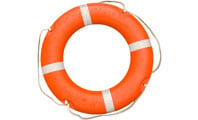AA
© Automobile Association Developments Limited 2014
Please use the information below to help identify the type of central heating boiler you have. If you have any questions about cover for your boiler, please call us on 0800 197 0610.

It's usually in the loft. If you do, you probably have a conventional boiler or a condensing boiler.
If you don't have a water tank in the loft, you likely have a combination boiler.
The following descriptions provide further information.
In a conventional heating system a cold water tank situated high up in your home – usually in the loft – feeds a hot water storage cylinder. It is usually enclosed in an 'airing' cupboard. Heated by the boiler, the cylinder supplies hot water via a circulating pump to the radiators and taps.
If all of the water in the hot water storage cylinder has been used, or has cooled overnight, the heating process has to be restarted to produce a fresh supply of hot water.
Conventional boiler key features
A back boiler is a variation on the conventional boiler, and is installed behind an existing heat source, like a gas fire or wood burning stove. The back boiler heats water which is fed to a hot water storage cylinder (usually in the airing cupboard) and to radiators. This system also needs a cold water storage tank, which is often located in the loft.
A combination boiler – or 'combi' boiler – heats water from the mains supply when a hot tap is turned on, as well as supplying hot water to the radiators.
Combination boiler key features
Condensing boilers can be either 'conventional' or 'combination', as described above. However, they work more efficiently by using the hot flue gases – which are normally lost – to assist heating the water.
Condensing boiler key features
Since 1 April 2005 the Building Regulations have specified that new or replacement gas-fired boilers installed in England and Wales should normally be condensing boilers. If your boiler has been installed since then it is likely to be a condensing boiler.
A thermal storage cylinder stores hot water. When a hot tap is turned on, a heat exchanger in the cylinder heats the mains water that passes through it.
The hot water stored in the cylinder can be pumped to radiators. This water never leaves the system, returning to the thermal storage cylinder to be re-heated.
Water in a thermal storage cylinder can be heated with an electric element, or with a gas or oil boiler.
Thermal storage key features